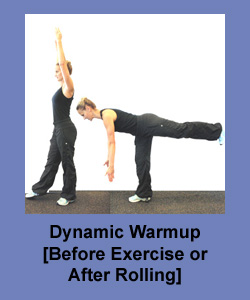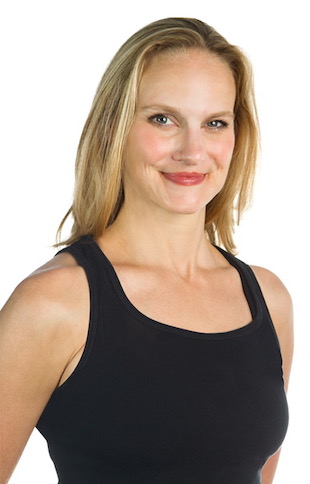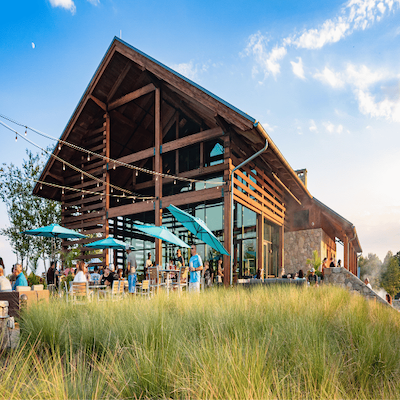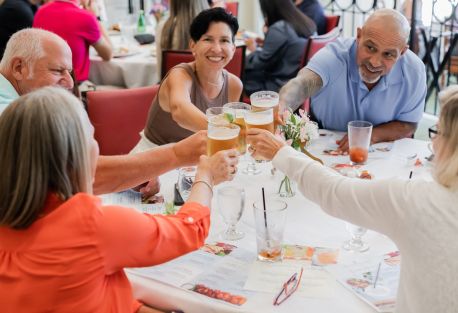Exercise is For Everyone…..Especially Baby Boomers
Category: Health and Wellness Issues
Erma Bombeck?
“The only reason that I would take up jogging is so that I could hear heavy breathing again.”
Editor’s note: Thanks to Dan J for making this suggestion about a fitness article: “Fitness…particularly since other apps or websites are geared towards younger folks. How about featuring a few tips here and there from fitness folks who may hold classes at some of these retirement places?” Leigh Pujado has been kind enough to help us carry out this suggestion, sharing the valuable insight she has gained as a long time personal trainer at WeBeFit.com.
By Leigh Pujado
April 29, 2019 — You know you are supposed to exercise. Practically everyone in your life, from your doctor, to your spouse, your kids, to your annoyingly fit at 70, tennis playing neighbor has consistently reminded you of the importance of getting in shape. So why is it that only 35% of you Baby Boomers are working out regularly?*
In the fitness business, the most common excuse we hear for not exercising regularly is “not having enough time.” Well, Retirees, you all can’t use that excuse anymore! Even so, there are many reasons older adults are apprehensive when it comes to starting an exercise program. It can be daunting, even scary or dangerous, especially if you have not formally worked out or played a sport in the past. But if you are ready to take the plunge and commit to an exercise regime, (or if you are just thinking about it,) here are some things to consider that just might get you off the sofa and into the gym.
–Everyone needs to move. EVERYONE! As the Godfather of Exercise, Jack La Lane said, “People don’t die of old age, they die of inactivity.” Like it or not, as we get older, we all experience “Sarcopenia,” the natural aging process in which after age 50, we begin to lose a significant amount of muscle mass, about 10% each decade to be exact. Exercise, most specifically, strength training, is the way to combat the wasting of our muscles as well as to avoid becoming weaker or frail. No matter your age, your physical ability or limitations, you should be moving your body everyday.
–Gather lots of information about the types of exercise available in your community. Ask the healthiest of your peers what they do for exercise and where they go to do it. There are so many different options, and not every type of exercise is right for every individual. Be open to trying a new sport, like tennis or cycling or swimming, or an exercise class, or even yoga. Find what you like and what exercise environment feels like a good fit. Check out the websites of local gyms, YMCA’s, studios, and fitness professionals to see what they offer. Call to inquire about getting a consultation on their services. If you live in an active adult or 55+ community the chances are great that there is a continuing stream of different exercise programs and activities to keep you fit. Check them out, and trust your gut that the people running them know what they are doing and will keep you safe. Sometimes a private lesson is the best way to ease into a program.
–Talk to your physician about beginning an exercise program. It is paramount that you see the doctor regularly to have check ups and blood work done, to rule out any conditions that will effect how you exercise. Your doctor may have suggestions of specific things he or she would like you to do or even exercises you should avoid. No one wants to find out they have a heart condition while on the treadmill!
– If you decide to work with a trainer or a fitness instructor, let that person know any health conditions or concerns you have. He or she may be able to make modifications for you as needed, plan stuff that is best suited to you, and keep you safe. No fitness professional wants to be surprised by your pre-existing health condition by finding out about it from the EMT’s they called when you passed out in the squat rack.
–Look for a fitness professional or facility that specializes in exercise for older adults. A common misconception is that gyms are all geared toward twenty-something meatheads and hot, young gym bunnies. Some are, but not all. You don’t buy your clothes from Forever Twenty-One, there are no Ariana Grande songs in your music collection, you don’t know who Liam Hemsworth is and frankly you don’t care.** As such, you shouldn’t have to work out with a bunch of kids and their terrible music and annoyingly skimpy clothes. Besides, the kids don’t have any money, so the places frequented by middle age and older adults tend to be nicer facilities.

–Consider hiring a professional trainer. You don’t have to wander aimlessly around a gym, wondering what exercises to do or how to work the machines. For the right amount of money, you can hire a qualified professional to guide you and build appropriate exercise plans. Many trainers (like moi) specialize in the needs of older adults and the nature of both injury and orthopedic issues. In fairness, I’d like to give you two warnings. One, good trainers are not cheap, and you should always check their credentials and references. A thorough consultation with a reputable trainer should allow you the opportunity to vet whether or not a trainer is right for you. Two, many gym rat, fitness enthusiast, meatheads call themselves “Trainers” yet have no skills at working with an individual’s needs or working with older adults. Again, a thorough consultation should occur to weed out the incompetent. Try this link for how to interview a trainer:
–For the tech-literate, fitness apps can really help keep you on track. Some are even geared toward older adults. There are apps for walking programs, ready made exercise routines and calorie counting. If you have a an Apple Watch it has great ways to monitor different kinds of workouts like biking, walking, swimming, etc. Check out this Silver Sneakers link for a list of the latest apps that may be appropriate for you:
–Expect discomfort. There’s no way to sugar coat it: Exercise is work. It is literally an exertion of oneself. It’s called “working out” not “hanging out,” and it requires effort, and at times, discomfort. This is not to say that you should ever exercise to such an extreme that you experience severe pain or incapacitation. I like to tell my clients that after a good work out, they should feel fatigued, and perhaps a little sore, but they should still be able to walk and use a toilet. If you feel nothing, you didn’t work hard enough. If you can’t sit on the can the next day, you over did it.
–You are what you eat. Yeah, yeah, yeah, you don’t want to hear another tirade about eating healthy. I know. But I don’t care. If you are still eating garbage at your age, you should expect to feel like crap. There’s no way around this. There is no magic diet, no magic pill, no magic regime other than good, old fashioned, healthy living, to make you feel good. Eat real foods, lots of plants, smaller amounts of meat and dairy, healthy, high fiber carbs. Consume everything, including alcohol, in reasonable portions. No amount of exercise can counteract a lifestyle of copious amounts of alcohol and a steady stream of fast food.
*Statistic information from JAMA 2014
**The author of this column had to Google where the kids are buying their clothes these days, who the top 40 music artists are, and which modern actors are considered “heart throbs.”

Leigh Pujado has been forcing people to exercise in exchange for money for more than two decades. She is a certified personal trainer and writer at WeBeFit.com
Comments? What type of exercise programs work for you? Tell us about your approach to exercise and how you got and stay motivated. Please share your comments and experiences below.






Comments on "Exercise is For Everyone…..Especially Baby Boomers"
RichPB says:
Really good article, but... Though this is a very long post, I hope it may help someone.
No I'm not going to make excuses. Once again (at 71) I've joined the ranks of the daily exercisers, but have a slightly different perspective. Everything that Leigh Pujado said above really does apply, but there are some different options. Long ago I was an athlete and manager of a track and field team, so my understanding of fitness is not simply casual knowledge and stretches back over 55 years and has been augmented by much personal research and experience. When I say everything that Leigh said is relevant, it's meant in earnest. But what if her ideals don't apply to you? What if a gym is not for you? What if real life physically prevents exercise? What alternatives exist?
At this point I'm "fairly" fit, but I'm overweight (by BMI, I'm considered "obese"). Also, in the past 6 years I had 4 major surgeries including a heart attack which required a triple bypass and then later had two total knee replacements (extreme damage plus severe arthritis). That estimate of 10% decrease in muscle mass per year is almost laughable -- in my case, I would say about 20%. Months of recovery and rehab hits hard in that area -- probably 50% of my past 6 years has been simple recovery and rehab. That can (did) lead to inertia, ennui and body weakness.
A key to better fitness is establishing regular daily workouts. Does that mean 7 day a week without fail -- no. I choose to commit to 6 days of workout with a day of rest. That rest day is a minor incentive and a time for muscle recovery from working daily. Your muscles need it. Missing another day is not a disaster, but I try hard not to miss more than one (habit building/maintaining). Other experts say 4 - 5 days a week 20 minutes of aerobic (raising your heartbeat) and I can't argue with them. But that doesn't help with developing the habit and I truly think that is a big part of success in keeping to a workout plan.
Basically, unless you are a quadraplegic, everyone can walk (or physically move your wheelchair, etc.) and buy or find some light 2 to 5 (or 10) lb weights. Walking while flexing with 2 lb weight helps the upper body. (I saw a suggestion that a can of re-fried beans or whatever you might have on hand can substituted for a light hand weight.) Dedicate 30 minutes of every day to nothing but "working out" that way. Don't worry about increasing time spent or going faster, doing more. Just keep at the 30 minutes a day and improvement will come over the next several months. I chose to start at 15 minutes on the elliptical with some light free weight time then added 5 minutes plus 10 on the treadmill. I'm still increasing, but intend to keep my total workout to less than an hour. That's my choice. Yours could be get to 30 minutes and stay there -- or whatever suits you. (I have really come to like the in-home workout area as it doesn't let rain or cold or other externals interfere. I still love to walk with my dog in our surrounding forest (and occasionally let and extended walk supplement or replace my routine workout), but it is my home "gym" (yours might be a neighborhood fitness center) that really helps me stay on track.
But even before the exercise, how do you simply overcome the ennui, the laziness, the simple inertia (resistance to getting started)? I learned that there are times in the day when I feel more motivated (first thing in the morning) and other times when any routine venture is likely to end within a few weeks (late afternoon, evening). So now I get up and go right down to exercise followed (in my case) by a shower. The trick is to get started, don't let anything get in the way so that you can develop a HABIT. Big word. I will get up two hours earlier if I need to do something else that morning (like make a doctor appointment or start a vacation trip), just to keep the habit going. I dress, make coffee, check BP, workout almost an hour (started with only 20 minutes), shower and get on to the rest of the day slightly tired but ready to go.
Perhaps, like me, you are not attracted to a gym environment. About 5 years ago, we went to Play It Again Sports (used sporting goods) and bought a decent treadmill and elliptical machine (minimal knee stress). That $500 investment paid off. We committed a small area in our home for workout space. Added a $50 set of free weights (dumbbells) and a bench of some sort and we have our own "gym", always available, no further costs since then, no driving time (minimum 20 minutes each way for us), and no continuing fitness center costs. (You can also check you local Habitat store or PTA thrift shop for decent used equipment.)
I have been described as a "doer" -- I want to get things done. I don't like effort without seeing the result. So yardwork suits me because I can see what I accomplished. But yardwork is not (at least for me) a routine everyday thing and frequently doesn't provide real (aerobic or not) exercise. My personal workout environment (for others, it could be walking in a park or around the neighborhood) gets me a means to be incented to keep going long enough (I'm trying for a lifetime) to eventually see the benefits. How long does that take -- in my case since I'm paying attention, it took about two months. Others may well take 3 or 4 -- but REGULAR daily workouts will produce results you can finally see.
What about the arthritis? I never knew how painful arthritis can be until the episode that I thought I had blown out my other knee was diagnosed as arthritis so bad (with no other treatments being successful) that the surgeon finally agreed to replace my other knee. (I am SO thankful!) Different people grow old a different rates. I have always been more "mature" (physically) than my peers. In later life that has also meant arthritis. In effect it's everywhere -- all my joints (except the now artificial knees :<). Hands and wrists included. They say you have to use your joints to help ease or adjust to the arthritis. Ok, yes -- but it still hurts. Using free weights daily aggravates my right thumb -- but so does picking up my dog. I won't stop lifting my dog (a little heavier than the free weights) and I won't stop working out over a little (or sometimes more) pain.
The benefits of all this? It takes a month or more to kick in, but I'm sleeping much better! My metabolism is up helping me to loose weight. I find that the minor (and major) daily exertions no longer lead to muscle strain and injury. My bad back is handling some occasional intense effort without putting me down and out. And it's easier to resist the attraction of food and alcohol which contributes to overall fitness. And yes, I am losing weight.
Am I perfect at this workout thing -- hell no! This is my umpteenth try at it going back to my post-college years -- in more recent years my longest period amounted to 5 months. But now I know (and have tried to share) my pitfalls, and see the benefits and, as I grow older, I see the need more than ever to keep on the path. Like any addiction, inactivity and ennui can be difficult to resist. But if you can get on the path, it definitely gets easier.
So it's after noon and with other issues of the day including writing this post, I have yet to get my routine started. So off to the elliptical machine.
Lesa says:
The best thing you can do for yourself to maintain your health is to exercise and get moving. I also used to be very active and over time became more sedentary and noticed the pounds creeping up. I also had less energy and more aches and pains. Three months ago I got back into a daily exercise regimen- still working at 65 though my job hours are flexible and offer me the opportunity to complete a daily workout. So far I have lost a significant amount of weight, still more to go.
Check out your insurance providers who may offer discounts- here in CA (Kaiser) they offer a program called Active & Fit which offers discounts to many fitness facilities. Now I look forward to my daily workouts- and I see many older adults working out (it's not all 20 somethings).
Jean says:
The importance of getting fit and maintaining fitness can't be over emphasized! And it doesn't have to feel like work either!. The Blue Zones researchers have shown that people in those areas with long lived people dont go to gyms and dont have exercise machines or weights; instead they engage in what the researchers call "natural movement". They walk rather than drive to the store (and carry their purchases home), they walk rather then drive for visits to friends and family, etc. They also spend time gardening, cleaning their own homes, etc. In other words, they just stay active every day rather than sitting. It's easy to adapt this lifestyle even if we live in a community far from the shops, things like parking at the far end of the parking lot (or a few blocks from the store if it's in town) and carrying packages rather than pushing in the cart, fire your the landscaper and house clearer and do it yourself.
And for those who have trouble walking, a good cardio exercise is....conducting music! Get a piece of dowel and some Beethoven CDs and conduct away:) You'll be surprised how fast you can get our heart rate holding your arms up and moving them enthusiastically!
nancy says:
I agree that I feel much better when I stretch daily and exercise regularly. The key for me is to stick to a routine - I have found that it is very hard to get back into an exercise routine once I have missed several days - or weeks - in a row for one reason or another. Someone said the key is to find something you enjoy, so that you have fun while exercising. I've found another key for myself is convenience - if i stop at the gym on my way home, I'll exercise. But once I get home, I'm not very likely to go back out. I'm still working at 67, so my perspective is a bit different.
Dubya says:
To help overcome the obvious, find a work out buddy! Walk with a friend. Meet at the health club. Play pickleball or tennis together. Run, swim, bike with a group. Try a new sport like dragon boat paddling.
When you schedule a time to meet a workout buddy, you are less likely to talk yourself out of exercising.
Now, shut down this computer and call a friend to go on a walk.
Imelda says:
I’m in my early 60’s and have been active all my life, hiking, running, horses, swimming, biking, yoga, skiing ....now I mostly walk fast and do my own strength, stretch and yoga routine (about 15 min EVERY day). I walk fast aiming for under 15 min/mile and walk a min of 3 miles most days, up to as many as 8, if I have the time. I’ve never been a gym person but have done years of yoga classes and of course, swimming in a lap pool requires membership. Retirement has allowed me to wake up slowly and take my time. And I get to listen to podcasts as I walk or make phone calls. I’m probably NOT going to walk in the rain but I can always get my stretch/strength 15 min each day.
Admin says:
I have been a dedicated fitness person for all of my adult life. If I don't get 3 aerobic workouts in a week along with almost daily stretching and pilates work, I don't feel good. I feel lucky that I found the motivation to keep this up, and that I feel so great. One thing that keeps me going is an ever-present lurking feeling that perhaps I will fall off the wagon and be a couch potato.
Everybody has to decide how they are going to live their life. My goal is to stay fit so I can improve my odds to live a long healthy life and keep doing the things I want to do. Trying not to get up too high on my high horse, it does disturb me to see what is happening to my baby boomer peers who don't do anything physical. Their posture is terrible, they get injured easily, they can't walk faster than a crawl, and they need to hold on to things to get in or out of a chair or car. If they would just do a little more physical activity and get in some classes their quality of life might significantly improve. Hopefully Leigh's article will help supply some good motivation to get on track.
RichPB says:
Nick, the long term consequences of not exercising that you talk about re that "high horse" are very true and can be near crippling. I've seen it personally and in my family.
Yesterday, after my workout, I very much overdid hours of some heavy yard work. Three months ago it would have had that "near crippling" effect. Due to my regular workouts, it is basically only some sore muscles.
ella says:
I love being outdoors, so for me exercise means walking whenever i can. When i am back in a home of my own, this will mean yard work and gardening too. I am small (4'11"), but have yet to find a companion willing to keep up with me. I love walking fast, seeing the changes in nature, and watching what's going on around me.
About four years ago, two orthopedic surgeons and one neurosurgeon told me i had to have spinal fusion. I went to the Hospital of Special Surgery in NYC, and thankfully, i was told not to have it done. For me it would require extremely extensive surgery. Now, my fast walking is my therapy. I believe it allows me to live without the need for the surgery that had been recommended to me!